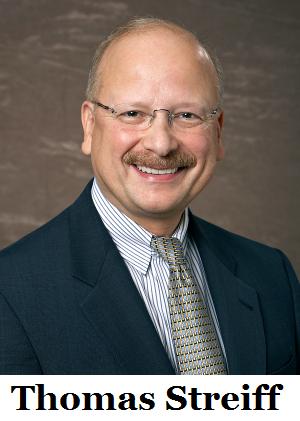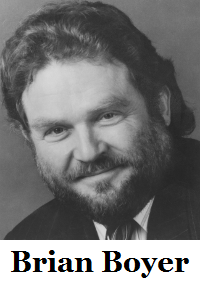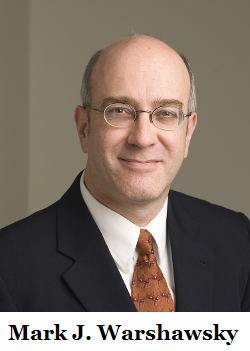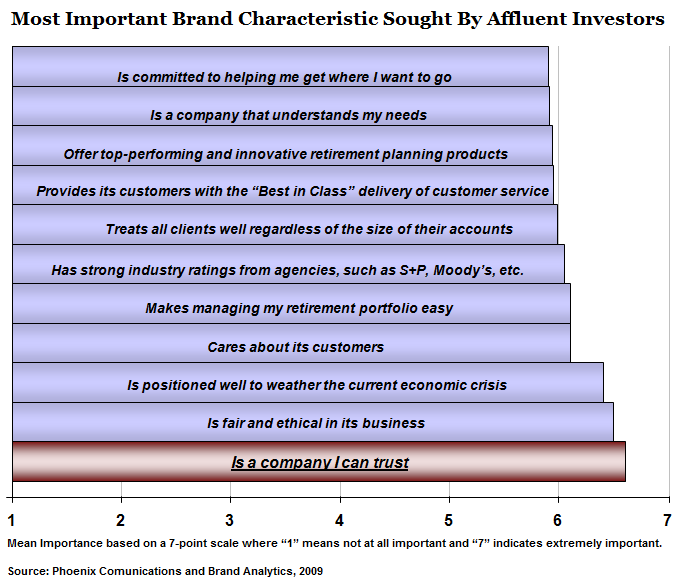In the years immediately following World War II a fairly new life form rarely if ever seen in world history had emerged in America-the retired person.
Throughout human history, the question of what to do with a person who was too old or infirm to work productively in service to the community was settled very simply—you buried them, since they had probably been working, most likely in small family farms or other small trading enterprises, right up to the day of their death.
But it was the surplus value produced by the factories of the industrial revolution that let the human race imagine a future other than being tethered to a hammer or plough until their dying day. It was in 1889 that imperial Germany instituted Otto von Bismarck’s groundbreaking system of government pension payments for the few who lived to be 65 years old; in 1935, US president Franklin D Roosevelt used that same Bismarck-derived retirement age to determine when Americans could start collecting old-age assistance under the Social Security Act.
But, unlike in Europe, US Social Security was never intended to fund the entirety of a person’s retirement. Some other private savings or retirement plan would have to be initiated during a person’s worklife.
Along with the government’s old-age income support program, the increasing power of big labor, plus the factor of big industry wanting an incentive to keep skilled labor during the booming war and post-war period, led to the development of numerous private pension systems. Much like in the old movies, this would be the check that the retiree would receive along with the gold watch at the retirement party. From then on until the end of his or his spouse’s life, he would receive that same check, in that same amount (with occasional adjustments for inflation) every month; these were known as the “defined benefit”, after what the employee could count on receiving – benefit plans.
It was then, in the salad days of America’s post-war economic dominance, that a wholly new cultural avatar appeared on the land-the well-off retiree. Prior to Social Security, the elderly had been America’s poorest age cohort, living in poverty or starvation, or, as seen in 1985’s look at the trials of old age during the Great Depression, The Trip to Bountiful, forced to endure a difficult existence with less-than-welcoming children.
Soon after the passage of the Medicare old-age medical assistance bill in 1965, there began a continuing sharp decline in elderly poverty, a decline fairly unique across the nation’s age cohorts. Whole regions of the country, such as Florida and the Southwest, began to be developed and populated by retirees from the colder US northeast now with the means and other wherewithal to live independently. Cultural commentators began to speak of a new “Third Age” of American life, retirement, that, what with advances in gerontology and income support, could be perhaps as extended and fulfilling as the human race’s traditional two phases of existence, childhood and career.
But with all those 40 million elderly Americans seemingly living high off the hog by 1970, you had to know that there would be those looking to divert some of this group’s riches in their direction. As so often happens with the enforcement of the laws of unintended consequence, the process by which the elderly of the near future will be laid low and destitute started with an effort to help the elderly of the past.
Not all went swimmingly with the defined benefit pension system. Some companies were just too slothful or incompetent to run their plans properly; others just couldn’t say no when the friends of Tony Soprano came knocking and making them an offer they couldn’t refuse-namely, to not get their legs broken as long as the gumbas were allowed access to the pension money. The US Employee Retirement and Income Security Act (ERISA) was enacted into law in 1974, providing standardized rules and obligations companies must follow in order to manage most effectively their pension obligations for the benefit of their retirees.
But it was a little-noticed feature of ERISA that would turn out to have a huge effect on how retirements were financed. Americans were then authorized to establish and employ a tax advantaged investment vehicle called the Individual Retirement Account (IRA). Here they could set away funds that they, not whoever was managing their company pension, could oversee and manage in just about any way they pleased.
Up to a certain limit, monies put into an IRA were deducted from a worker’s gross taxable income, providing a very significant tax cut in those high marginal tax-rate days, and any capital gains accruing to the investments in the IRA were not subject to taxation until the worker’s retirement, when he would presumably be paying taxes at a much lower rate than during his working life.
By the late 1970s, middle-aged Americans were swooning over IRAs the same way that their children were over Tony Manero’s quiana shirt in Saturday Night Fever. They enjoyed the tax breaks of the IRA, and the chance to put their retirements in their own hands appealed to the country’s independent, cowboy spirit. Very few saw or realized what was actually happening here – that their employers, the corporations, were being taken off the hook to provide for employees’ retirement.
It was in 1978 that Congress amended the rules of the Internal Revenue Service (IRS) by adding section 401(k), taking the self-directed aspect of IRA investing a big step forward. In this, companies were authorized to offer their employees (the self-employed could do it on their own) an investment vehicle that came to be known as the 401(k). Here, employees could invest in a defined set of investment choices specified by their company, with the wages committed to the fund once again not subject to immediate taxation.
What really differentiated the 401(k) from the IRA was that, at its option, the company could match all or a part of the employee’s contribution with a contribution, called a “match”, of their own. This was the contrast to the standard, defined benefit pension plan that was still fairly common at the time; employers contributing to 401(k) and other type retirement plans were the cutting edge of America’s brave new world of retirement security, called “defined contribution” benefit plans.
Employers, both private and public, loved 401(k) defined contribution plans—they were much cheaper to administer than defined benefit plans. The latter required the continuing employment by the company of high-priced investment managers in order to ensure that the guaranteed benefit promised to the workers was earned—in contrast, all that 401(k) defined benefit plans required was the company doing an electronic funds transfer into the employee’s plan. In addition, it came to be accepted that many companies were not even offering any type of corporate financial match to the employee’s funds; just having set up a 401(k) was seen to be a commitment sufficient to the workers’ retirement security.
In 1996, economist Leslie E. Papke of Michigan State University investigated the issue of whether defined contribution 401(k) plans were replacing, not supplementing, more traditional defined benefit pension plans.
“I find that 401(k) and other DC [defined contribution] plans are substituting for terminated DB [defined benefit] plans and that offering a DC plan of any type increases the probability of a DB termination. Thus, it appears that, at the sponsor level, many of the new 401(k) plans may not be avenues for net saving but are replacements for the more traditional pension forms. Using several specifications, I estimate that a sponsor that starts with no 401(k) or other DC plan and adds a 401(k) is predicted to reduce the number of DB plans offered by at least 0.3. That is, the estimates imply that one sponsor terminates a DB plan for about every three sponsors that offer one new 401(k) plan.”
What did employees think of this phenomenon? It is important to remember that generous defined benefit pension plans were very much a product of the era of powerful US industrial and commercial labor unions, power that started to erode with the economic dislocations of the 1970s. President Ronald Reagan’s firing of the PATCO air traffic controller union workers in 1981 sent a clear signal to both labor and management as to where the US Government’s sympathies lay—sympathies that only slowly and haltingly moved back a bit towards labor during president Bill Clinton’s uneasy cohabitation with the pro-corporate Republican conservatives who took over Congress in 1994.
But it’s not like the workers’ cages weren’t gilded with a fair amount of gold. The big equity market rally that started in 1982 soon put the Dow Jones Industrial Average back over 1,000, erasing the losses of the grim bear markets of the 1970s. Self-directed investing in 401(k)s seemed to hearken back to the frontier self-sufficiency of the American psyche that conquered a continent; 100 years ago, families made soap; now they make their own investment choices. Who needed those fancy-pants pension fund managers with their hand in your pocket, especially since the then overwhelmingly accepted Efficient Markets Hypothesis (EMH) was saying that any average Joe could do just as well or better with a portfolio of market indexed mutual funds?
True, there were a few bumps in the road, like the six-week bear market that culminated in the crash of 1987, or the dot-com crash of 2000. Still, stocks came back from these travails; American 401(k) investors seemed to get the idea that it was in stocks’ destinies always to rally to new highs after setbacks, especially since that was the very idea that media types and books incessantly drilled into their heads. By the time of the market top in October 2007, there were estimates that Americans were holding up to US$4 trillion in equity market based 401(k) plans.
Culturally, the defined benefit pension plans that financed much of the retirement of the Depression/World War II “Greatest Generation” came to be seen by America’s 80 million baby boomers as hopelessly old fashioned and passé, their father’s Oldsmobile. With stocks up high, there was a common, almost Jungian dream that spread through the baby boomers; it was of retirement not at age 65, but at age 59 and six months, when statutory tax penalties against early withdrawals of 401(k) and other retirement plans lifted.
After that, Americans could live the life they see led by the people who sell Geritol nutritional supplements on the evening network news (because apparently no one under age 50 still watches the evening network news), active, jet-setting, athletic, with smooth, tanned faces on supple and toned bodies.
For years, Americans slaved away in their malodorous cubicles under the rule of crappy monster bosses, their only dream of liberation being that the equity appreciation in their 401(k)s would allow them to sing Johnny Paycheck’s famous “Take this Job and Shove it” on the day they became eligible for plan withdrawals.
And so were the lambs led fat and happy down into the screaming abattoir of the world financial crisis.
Julian Delasantellis is a management consultant, private investor and educator in international business in Washington State.
Read A Fate Worse than Fargo: Part 2 of a two-part essay on the dark side of Boomer retirement. Discretion is advised.
Copyright 2009 Asia Times Online (atimes.com)


 “The products will be distributed initially through the large broker dealers, which includes the four remaining wirehouses and the large independent broker dealers, as well as the banks,”
“The products will be distributed initially through the large broker dealers, which includes the four remaining wirehouses and the large independent broker dealers, as well as the banks,”  According to one advisor, who heard it from his PIMCO wholesaler, the wirehouses will charge a front-end load of 3.75%, 3.25%, 2.25% and 1.75% for investments of under $100,000, $100,000 to $249,999, and $250,000 to $499,999, and $500,000 to $999,999, respectively. Investments of $1 million or more will have no load.
According to one advisor, who heard it from his PIMCO wholesaler, the wirehouses will charge a front-end load of 3.75%, 3.25%, 2.25% and 1.75% for investments of under $100,000, $100,000 to $249,999, and $250,000 to $499,999, and $500,000 to $999,999, respectively. Investments of $1 million or more will have no load. 
 In the ten months that Boyer and his crew spent working on The New Reality—the third in a series on retirement that he has created for PBS—he interviewed more than 60 people in 18 states and two countries, shot 150 hours of videotape, and transcribed conversations amounting to about half a million words.
In the ten months that Boyer and his crew spent working on The New Reality—the third in a series on retirement that he has created for PBS—he interviewed more than 60 people in 18 states and two countries, shot 150 hours of videotape, and transcribed conversations amounting to about half a million words.
 Pang and Warshawsky’s study tends to endorse the recommendations of many income-phase experts, including Moshe Milevsky and others, who have advocated strategies that combine income annuities with mutual funds in retirement.
Pang and Warshawsky’s study tends to endorse the recommendations of many income-phase experts, including Moshe Milevsky and others, who have advocated strategies that combine income annuities with mutual funds in retirement. 

